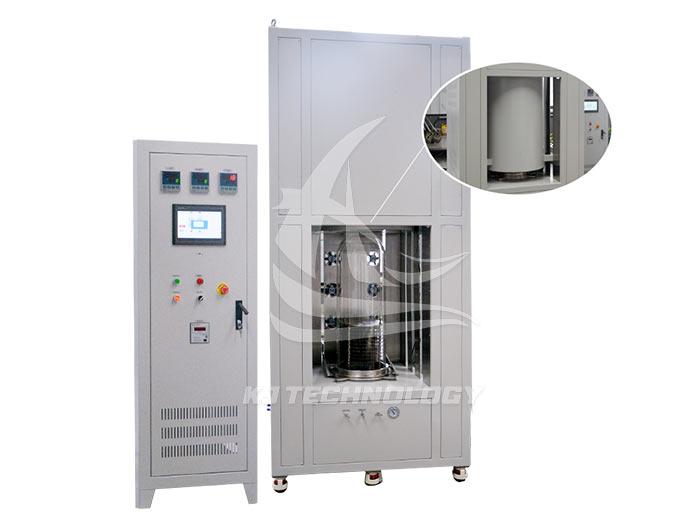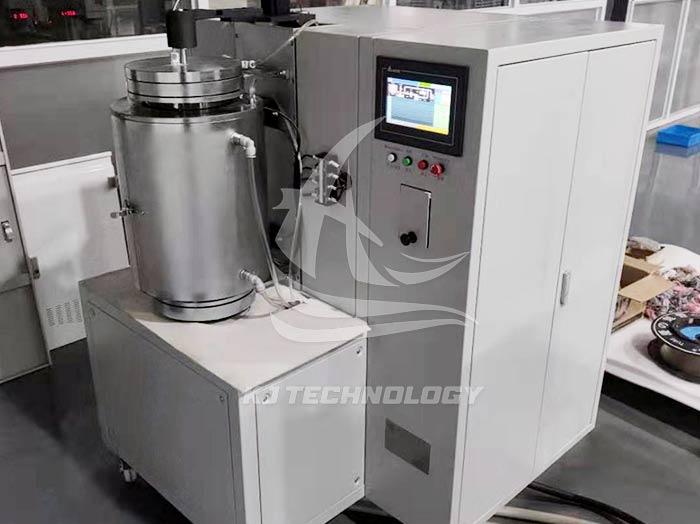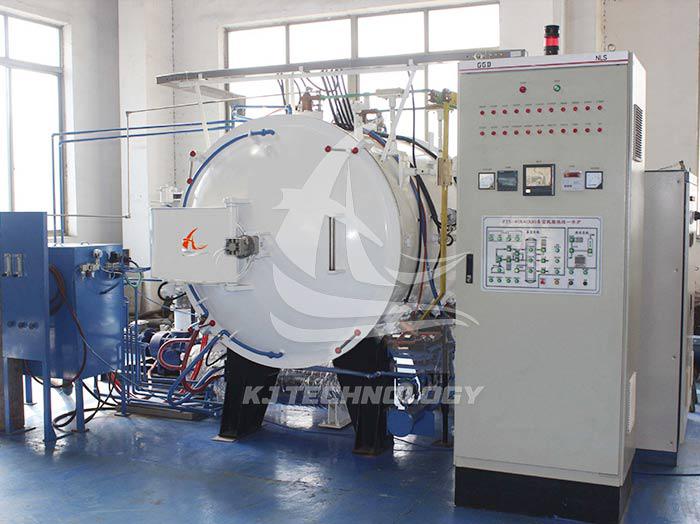What reducing gases can be passed through a vacuum annealing muffle furnace?
 05-15-2025 Author: KJ technology
05-15-2025 Author: KJ technology
The vacuum annealing muffle furnace is widely used in material heat treatment, which can improve the microstructure and optimize the performance of materials by introducing reducing gases. The following are common reducing gases that can be introduced into a vacuum annealed muffle furnace, along with their characteristics and applications:
1. Hydrogen (H ₂)
Characteristics: Hydrogen is one of the strongest reducing gases, which can effectively remove oxides on the surface of materials, improve the purity and surface quality of materials.
Application:
Metal materials: used for deoxidation treatment of metals such as stainless steel and titanium alloys to prevent high-temperature oxidation.
Semiconductor materials: In the preparation of semiconductor materials such as silicon and germanium, hydrogen can remove surface oxides and improve the electrical properties of the materials.
Powder metallurgy: used for the reduction and sintering of metal powders to improve the density and strength of materials.
Attention: Hydrogen is flammable and explosive. When using it, it is necessary to strictly control the atmosphere and pressure inside the furnace to ensure safety.
2. Carbon monoxide (CO)
Characteristics: Carbon monoxide is a medium strength reducing gas commonly used in high-temperature reduction reactions.
Application:
Steel industry: used for the reduction of iron ore to produce high-purity iron.
Carbide preparation: Carbon monoxide can be used as a reducing agent in the preparation of hard alloys such as titanium carbide and tungsten carbide.
Caution: Carbon monoxide is toxic, and good ventilation and safety measures must be ensured when using it.
3. Ammonia gas (NH3)
Characteristics: Ammonia decomposes into nitrogen and hydrogen at high temperatures, possessing both reducing and nitriding properties.
Application:
Nitriding treatment: Used for nitriding treatment of metals such as steel and titanium to improve the hardness and wear resistance of materials.
Semiconductor materials: In the preparation of materials such as gallium nitride (GaN), ammonia can be used as a nitrogen source.
Caution: Ammonia has an irritating odor and should be prevented from leaking or inhaling.
4. Methane (CH ₄)
Characteristics: Methane decomposes into carbon and hydrogen at high temperatures, with a certain degree of reducibility.
Application:
Carbonization treatment: Used for the carbonization treatment of metals to improve the hardness and corrosion resistance of materials.
Graphene preparation: Methane can be used as a carbon source in the chemical vapor deposition (CVD) method for graphene preparation.
Attention: Methane is flammable and explosive, and the atmosphere inside the furnace must be strictly controlled.
5. Mixed gases (such as H ₂+N ₂, H ₂+Ar)
Characteristics: By mixing different gases, the reducibility and protective properties can be adjusted to meet specific process requirements.
Application:
Stainless steel bright annealing: Introduce a mixture of H ₂+N ₂ gas to prevent material oxidation while maintaining surface brightness.
High temperature alloy treatment: Introduce a mixture of H ₂ and Ar gas to reduce surface oxidation and improve performance.
Attention: The gas ratio should be adjusted according to the material characteristics and process requirements.
Considerations for selecting reducing gases
Material type: Different materials have different requirements for reducing gases, and the appropriate gas should be selected based on the chemical properties of the material.
Process temperature: Gas has stronger reducibility at high temperatures, but the stability and safety of the gas need to be considered.
Equipment safety: Gases such as hydrogen and carbon monoxide are flammable and explosive, and it is necessary to ensure that the equipment has good sealing and safety protection measures.
Environmental requirements: Choose non-toxic and pollution-free gases to reduce their impact on the environment.
Precautions for operation
Gas purity: Use high-purity gas to avoid impurities affecting material properties.
Atmosphere control: Accurately control the atmosphere and pressure inside the furnace to ensure the uniformity and stability of the reduction reaction.
Safety protection: Install gas leak alarm devices, equip with fire extinguishing equipment, and ensure safe operation.








